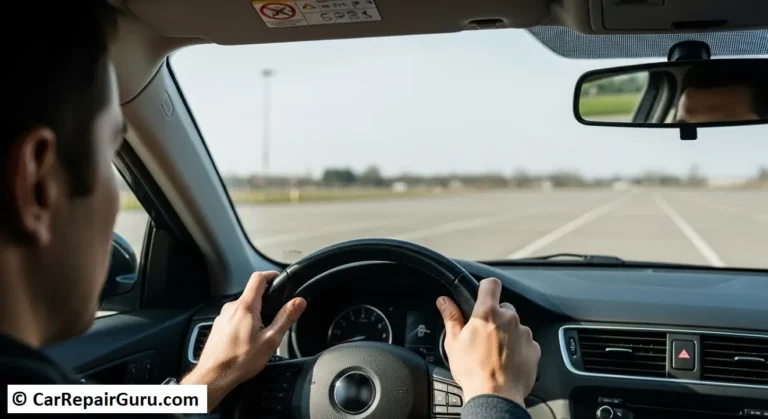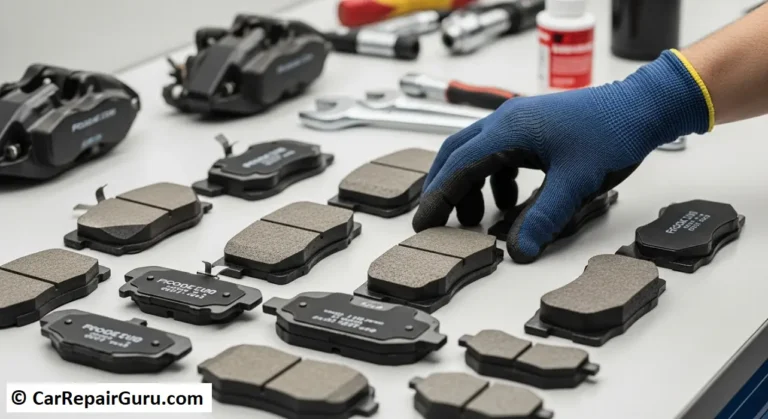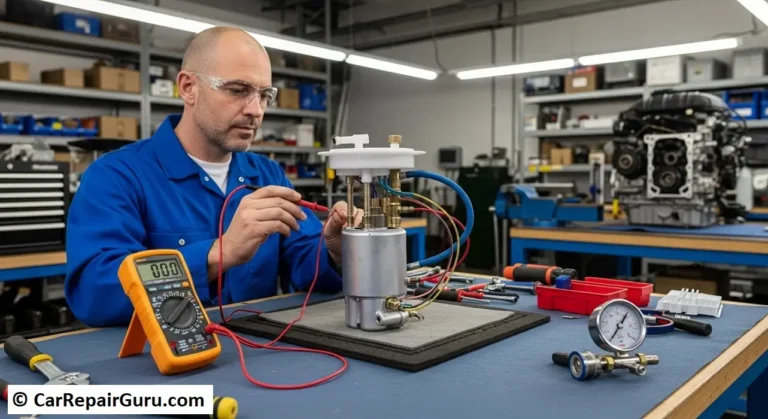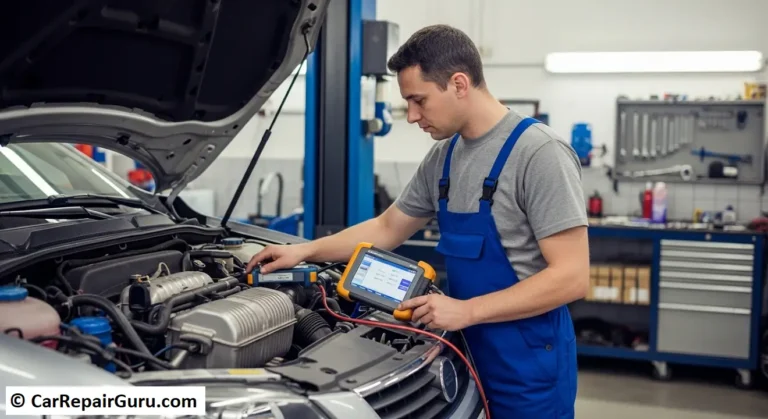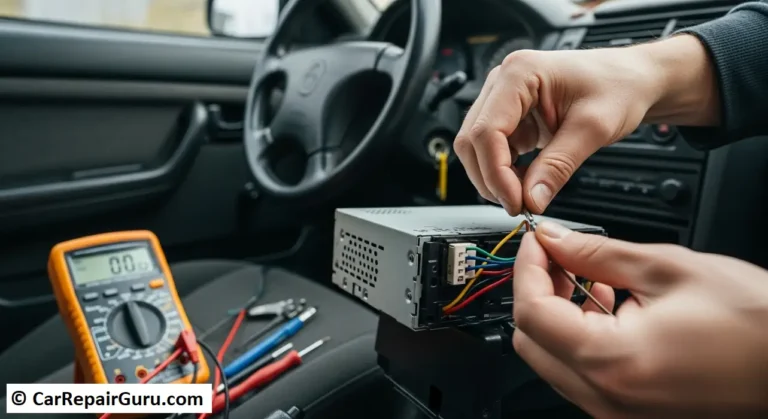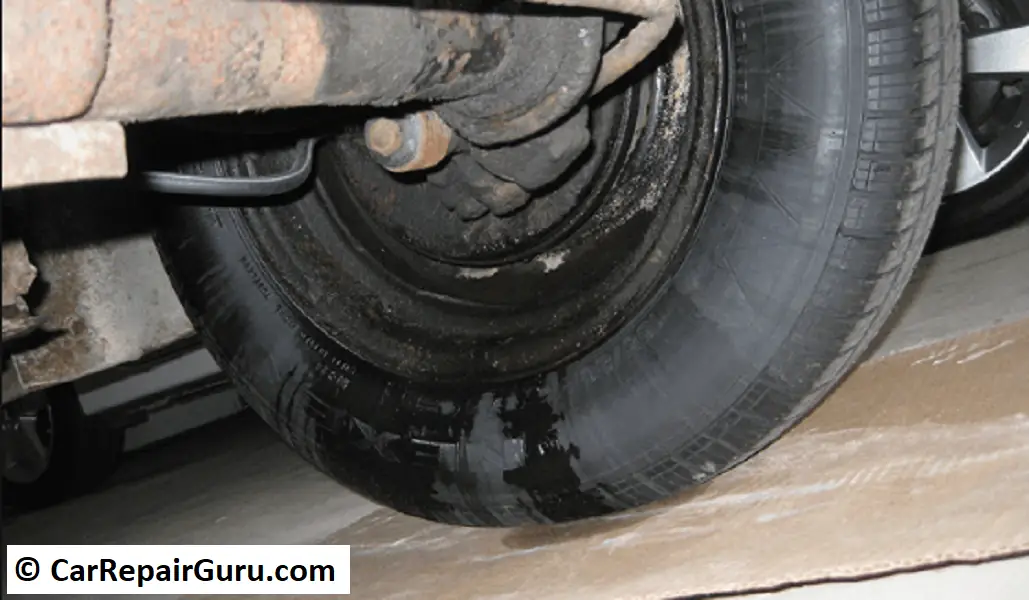
Have you ever experienced a soft or spongy brake pedal while driving? It might be more than just wear and tear—it could indicate a brake line leak. Brake lines are the lifelines of your vehicle’s braking system, carrying brake fluid to ensure smooth and responsive stopping power. When these lines develop leaks, it compromises the efficiency and safety of your car.
A brake line leak occurs when the integrity of the line is damaged, leading to brake fluid loss. This can happen due to corrosion, physical damage, or aging components. Without enough brake fluid, your vehicle’s ability to stop effectively is significantly reduced, putting you and others on the road at risk.
Maintaining a leak-free brake system is crucial for safe driving. Regular inspections, timely repairs, and understanding the early signs of a leak can make all the difference in avoiding costly accidents and ensuring your car’s longevity.
Common Causes of Brake Line Leaks
A brake line leak can compromise your vehicle’s safety, and understanding its root causes is the first step toward prevention. Here are the most common culprits behind this issue:
Corrosion and Rust
Over time, brake lines are exposed to harsh environmental conditions, including moisture, road salt, and dirt. These elements can cause corrosion, particularly in regions with wet or snowy climates. Rust weakens the metal, creating small holes or cracks that allow brake fluid to escape. This is one of the leading causes of brake line leaks and often results from a lack of protective maintenance.
Physical Damage
Brake lines, though designed to be durable, are not immune to physical damage. Road debris, like sharp rocks or metallic objects, can strike the lines while driving, causing immediate punctures. Additionally, minor accidents or rough off-road conditions can bend, crack, or rupture brake lines, leading to leaks.
Worn-out Seals
Brake systems rely on seals and hoses to maintain fluid pressure. Over time, these components can degrade due to age, heat, and exposure to brake fluid. When seals crack or hoses wear out, fluid can leak out, reducing the system’s effectiveness. Regular inspections can help detect these issues before they lead to significant problems.
Manufacturing Defects
While rare, manufacturing defects can occasionally cause brake line issues. Poor-quality materials or faulty production processes can result in lines that are more prone to wear and tear. In some cases, automakers issue recalls to address these defects, emphasizing the importance of staying informed about your vehicle’s maintenance history.
By understanding these common causes, you can take proactive steps to protect your brake lines, ensuring a safer and more reliable driving experience. Regular maintenance and prompt repairs are key to avoiding costly and dangerous brake system failures.
Symptoms of a Brake Line Leak
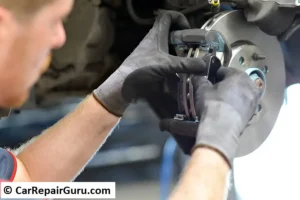
Identifying a brake line leak early is critical for maintaining your vehicle’s safety. Here are the most common symptoms to watch out for:
Reduced Braking Efficiency
One of the first signs of a brake line leak is reduced braking performance. You may notice that your car takes longer to stop or that the brakes feel less responsive. This happens because leaking brake fluid prevents the hydraulic system from generating the necessary pressure for effective braking.
Spongy or Soft Brake Pedal
If your brake pedal feels spongy or soft when pressed, it could indicate air in the brake lines caused by a fluid leak. Instead of providing firm resistance, the pedal may sink closer to the floor, signaling an urgent need for inspection. This symptom is not only inconvenient but also dangerous, especially during sudden stops.
Brake Warning Light Activation
Modern vehicles are equipped with dashboard warning lights to alert you of potential issues. If the brake warning light comes on, it may be due to low brake fluid levels caused by a leak. While the light doesn’t always point specifically to a brake line issue, it’s a clear indication that the braking system needs attention.
Visible Fluid Leaks Under the Vehicle
Brake fluid leaks are often easy to spot if you know what to look for. Check under your car for puddles of a clear or slightly yellowish fluid near the wheels or along the brake lines. Brake fluid has a slippery texture and a distinct smell, which can help differentiate it from other automotive fluids like oil or coolant.
Unusual Noises During Braking
Squealing, grinding, or hissing noises when you press the brakes can be another sign of trouble. These sounds may indicate that air has entered the brake lines or that the brake pads are struggling to engage due to insufficient fluid pressure.
Recognizing these symptoms and addressing them promptly can prevent further damage to your brake system and reduce the risk of accidents. If you notice any of these warning signs, have your vehicle inspected by a professional mechanic as soon as possible.
Diagnosing Brake Line Leaks
Detecting a brake line leak early can save you from costly repairs and potential safety hazards. Here’s how to diagnose brake line leaks effectively:
Visual Inspection
The first step in diagnosing a brake line leak is a thorough visual inspection. Start by checking the area under your vehicle for wet spots or puddles of brake fluid. Brake fluid is typically clear or slightly yellow with a slippery texture and a distinctive smell. Look around the wheels, brake lines, and master cylinder for any signs of dripping or dampness. Rusted or corroded areas on the brake lines may also indicate a potential leak. Using a flashlight can help you spot leaks in hard-to-see areas.
Inspect the brake fluid reservoir under the hood as well. Low fluid levels can be an indirect sign of a leak, especially if you’ve recently topped it off. If you notice frequent drops in fluid levels, a closer inspection of the brake lines is warranted.
Pressure Testing
Pressure testing is a more advanced method for diagnosing brake line leaks. This involves pressurizing the brake system and observing whether the pressure holds steady. A drop in pressure indicates that fluid is escaping somewhere in the system.
This test can be performed using a pressure gauge or a specialized brake system tester. While it requires some technical expertise and equipment, it’s an effective way to identify internal weaknesses or hidden leaks that may not be visible during a basic inspection.
Professional Mechanic Evaluation
When in doubt, consulting a professional mechanic is the best course of action. Experts have the tools and experience to identify and address brake line leaks accurately. Mechanics can perform detailed inspections, pressure tests, and even dye tests to pinpoint the exact location of the leak.
Professional diagnosis ensures that all potential issues are addressed, not just the visible ones. For example, a mechanic might discover additional damage to the brake system caused by a leaking line, such as worn-out brake pads or compromised calipers.
Ignoring or misdiagnosing a brake line leak can lead to severe consequences, including total brake failure. Regularly inspecting your brake lines and seeking expert assistance when necessary can ensure your vehicle’s safety and reliability on the road.
Repairing Brake Line Leaks
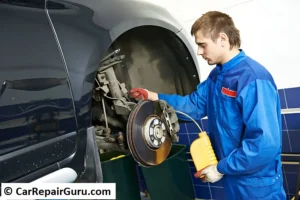
Addressing a brake line leak promptly is essential for maintaining your vehicle’s safety. Repairs can range from temporary fixes to permanent solutions, depending on the severity of the leak and the condition of the brake line. Here’s a breakdown of the options and considerations:
Temporary Fixes with Tape or Sealant
For minor leaks or as an emergency measure, temporary fixes like tape or sealant can be used. Specialized brake line tapes, such as high-pressure hydraulic tape, can provide a quick patch over small leaks. Similarly, brake sealants can temporarily plug leaks to restore some functionality.
However, these fixes are not long-term solutions. They’re meant to get you safely to a mechanic or buy time until proper repairs can be made. Temporary fixes should never replace professional repairs, as they may fail under high pressure or extreme conditions.
Permanent Solutions: Replacing Damaged Sections
The only reliable way to repair a brake line leak is to replace the damaged section of the line. This involves removing the compromised portion and installing a new segment of brake line, often using flaring tools to ensure a secure fit. For severe corrosion or extensive damage, replacing the entire brake line may be necessary.
Replacement parts can be either pre-bent lines or custom-fabricated ones, depending on the make and model of your vehicle. While this repair requires more time and expertise, it ensures the integrity of the braking system and restores full functionality.
Estimated Repair Costs
Repair costs for brake line leaks can vary widely based on the extent of the damage and labor charges. Temporary fixes like tape or sealant are inexpensive, often under $20. Replacing a single section of brake line typically costs between $100 and $200, including parts and labor.
If the entire brake line system needs replacement, the cost may range from $250 to $500 or more. Investing in quality materials and professional service ensures lasting results and peace of mind.
Safety Precautions During Brake Repairs
Brake system repairs involve high-pressure fluids and precision work, making safety a top priority. Always wear protective gloves and eyewear when handling brake fluid, as it is corrosive and harmful to the skin and eyes.
When replacing brake lines, ensure the vehicle is securely elevated using jack stands, not just a jack. After completing the repair, thoroughly bleed the brake system to remove any air, ensuring consistent brake pressure.
Repairing brake line leaks properly is critical for preventing brake failure and maintaining safe driving conditions. Temporary fixes may suffice in an emergency, but permanent repairs are essential for long-term reliability.
Preventing Future Brake Line Issues
Keeping your brake system in top condition is essential for safe and reliable driving. Here are some proactive steps to prevent future brake line issues:
Scheduling Regular Brake Inspections
Routine brake inspections are the cornerstone of preventing brake line problems. Have your brake system checked by a professional mechanic at least once a year or as recommended by your vehicle’s maintenance schedule. During these inspections, mechanics can identify early signs of wear, corrosion, or damage to the brake lines and other components.
Regular checks also ensure that brake fluid levels are adequate and that there are no leaks. Staying ahead of potential issues can save you from costly repairs and keep you safer on the road.
Using Anti-Corrosion Treatments
Brake lines are especially vulnerable to corrosion caused by moisture, road salt, and other environmental factors. Applying anti-corrosion treatments to the brake lines can help protect them from rust and extend their lifespan. These treatments create a barrier that shields the metal from moisture and corrosive elements.
Additionally, washing your vehicle, particularly the undercarriage, after driving in snowy or salty conditions can remove residue that accelerates rust formation. This simple step can significantly reduce the risk of corrosion-related leaks.
Recognizing Early Warning Signs to Prevent System Failure
Being vigilant about early warning signs of brake line issues can prevent minor problems from escalating. Symptoms like spongy brake pedals, visible fluid leaks, or unusual noises during braking should never be ignored. Addressing these signs promptly can prevent more severe damage to the brake system and reduce the risk of accidents.
Educating yourself about the common causes and symptoms of brake line leaks empowers you to act quickly when something seems off. Combined with regular maintenance and protective measures, these habits can keep your brake lines in excellent condition and ensure a safe driving experience.
Conclusion
Brake line leaks are more than just a minor inconvenience—they pose a serious risk to your safety and the reliability of your vehicle. Addressing these leaks promptly is essential to prevent brake failure, protect your car, and ensure peace of mind on the road.
While temporary fixes can help in emergencies, professional repairs are the best way to restore your brake system’s integrity. Experienced mechanics have the tools and expertise to diagnose and repair brake line issues thoroughly, ensuring your safety and avoiding further complications.
To maintain a healthy brake system, schedule regular inspections, apply anti-corrosion treatments, and stay alert for early warning signs such as soft brake pedals or visible fluid leaks. By being proactive and investing in proper maintenance, you can extend the lifespan of your brake lines and enjoy safer driving for years to come. Safe brakes mean a safer journey for everyone.
Brake Line Leaks FAQ
Q1: What causes brake line leaks?
A1: Brake line leaks are often caused by corrosion, physical damage, or aging seals. Rust from environmental exposure is the most common culprit.
Q2: How can I tell if my brake lines are leaking?
A2: Look for symptoms like reduced braking efficiency, spongy brake pedals, warning lights, or visible fluid under the car.
Q3: Can I drive with a brake line leak?
A3: It’s unsafe to drive with a brake line leak. Reduced braking power can lead to accidents. Seek immediate repairs.
Q4: How much does it cost to fix a brake line leak?
A4: Repairs can range from $100 to $500 depending on the severity and whether you replace the entire brake line.
Q5: How can I prevent brake line leaks?
A5: Regular maintenance, anti-corrosion treatments, and prompt repairs can help prevent brake line leaks.
